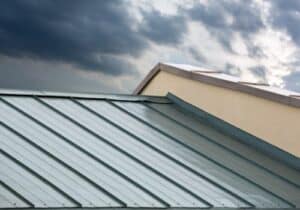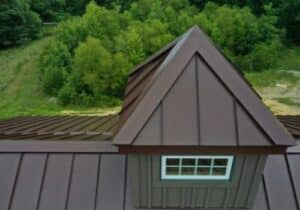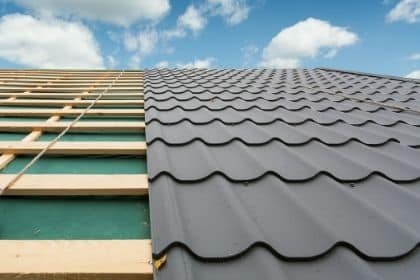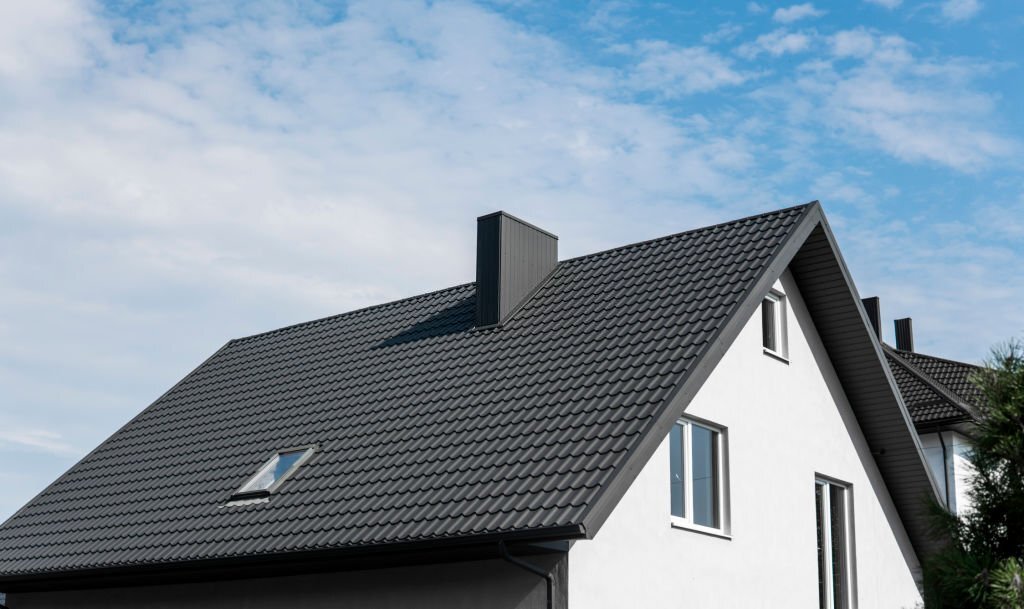
Metal roofs were once considered pieces of novelty once upon a time. Architect-designed homes with upscale interiors and exteriors sported metal roofs in all their glory. But call it increased demand or efficient manufacturing processes, metal roof installation can now be found in over 15% of all roofs — they are no longer a luxury but an asset many homeowners and commercial businesses seek.
Now although metal roofs are fairly resistant to rot, fire, and insect damage, making their longevity quite lucrative and worth the investment, a little care and caution can make them last even longer. Lucky for you, metal roof maintenance is one of the simplest tasks when it comes to home improvement.
So, we asked some roofers how to get the best bang for your buck without tiring yourself out when maintaining your own metal roof. This is what they said.
1) Before You Begin: Check Your Metal Roof for Safety

- Use OSHA-approved fall protection any time you are on a roof
- Wear soft-soled shoes instead of black ones to maintain the color integrity of the metal roof
- Avoid walking on any gutters, rake flashings, fiberglass panel, or skylight or else you risk needing to call in a professional team for more repairs
2) Remove Dirt and Debris from Your Metal Roof

Set a schedule a few times each year to clean the roofline and its adjacent areas. Let me help you with a checklist:
- Clean off dirt, mildew, stands, and other elements
- Rinse out your drains and gutters so they don’t get clogged and work ineffectually
- Remove the leaves stuck in valleys and other dead spots
- Throw out any branches lying on the roof surface
- Look for scratches, chipping, flaking, and fading issues while removing debris
3) Read the Weather Report to Prep for Proper Metal Roof Maintenance

Another great alternative to this is applying a protective coat to your roof in advance before any signs of corrosion appear. Should any dents or damages occur, you can simply search for “metal roof near me” to replace the specific panels. Companies that offer metal roof maintenance are always available to assist with any issues. Always stay one step ahead and set aside time to inspect your roof after inclement weather.
4) Create a Schedule for Structural Metal Roof Maintenance

Stresses like wind, hail, moisture, and heat can cause inherent impairment to your shelter, which can multiply over time. Considering the technicalities involved, it is always prudent to hire a trained professional for this job, since early signs of issues will be minor or impossible to spot without the proper education. This includes:
- Checking for screws, rivets, and fasteners
- Fixing any loose seams or panels
- Rectifying the damaged flashing materials
- Replacing the sealant at key junctions
- Looking around the penetration points for any degradation
- Ensuring there aren’t any punctures on the panels
A common practice is making sure that the structural performance is checked every two years. And while you might not be doing all the work at hand, it is essential to pay attention to the contractor you’re hiring for the same. A metal roofing company like Southern Maryland Roofing is experienced at these maintenance checks and available to assist.
5) Check for Temperature Variances to Determine Metal Roofing Repairs

For instance, any attic moisture due to roof leaks could easily ruin your insulation, leaving your prime protection in biting winters completely unavailable. Interestingly, the loss of insulation can also cause the cold air to escape in the summers. Either way, your thermostat would prove inefficient. And let’s not talk about the rocketing energy bills!
A good place to start would be deploying a roof maintenance cycle at the beginning and end of each major season to ensure you’re in safe hands — this ensures your metal roof is properly installed without any damages and other related materials are also secure.
What You Need to Hear About Metal Roofing Maintenance
Once you install quality metal roofs, there is not much to worry about. With a meager maintenance cost and effort required, it saves you the pain of going through recurring outlays that come with other roofing materials. A little care and your shelter shall stay in place for years to come, especially when you work with professionals. Just remember:
- Have a structural overview every two years
- Report potential problems immediately
- Hire a professional when in doubt
- Clean the parts from time to time
- Always stay safe
- Monitor the weather



